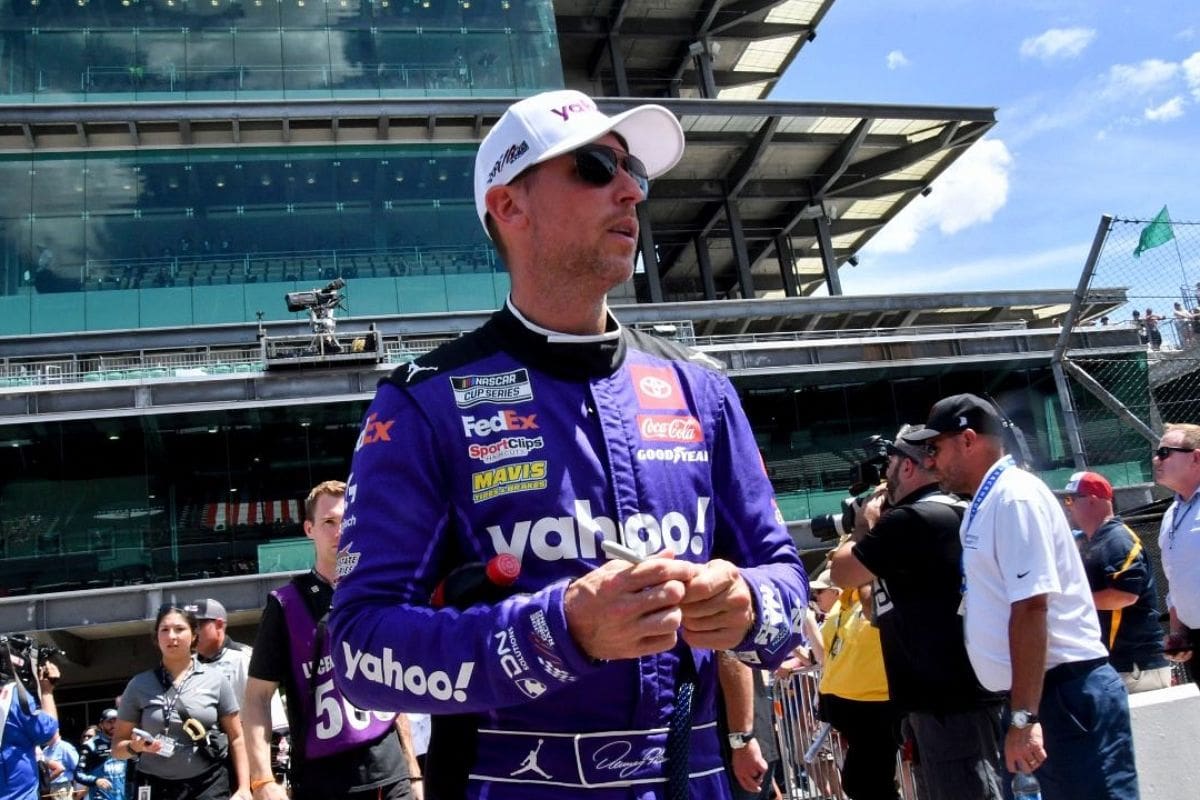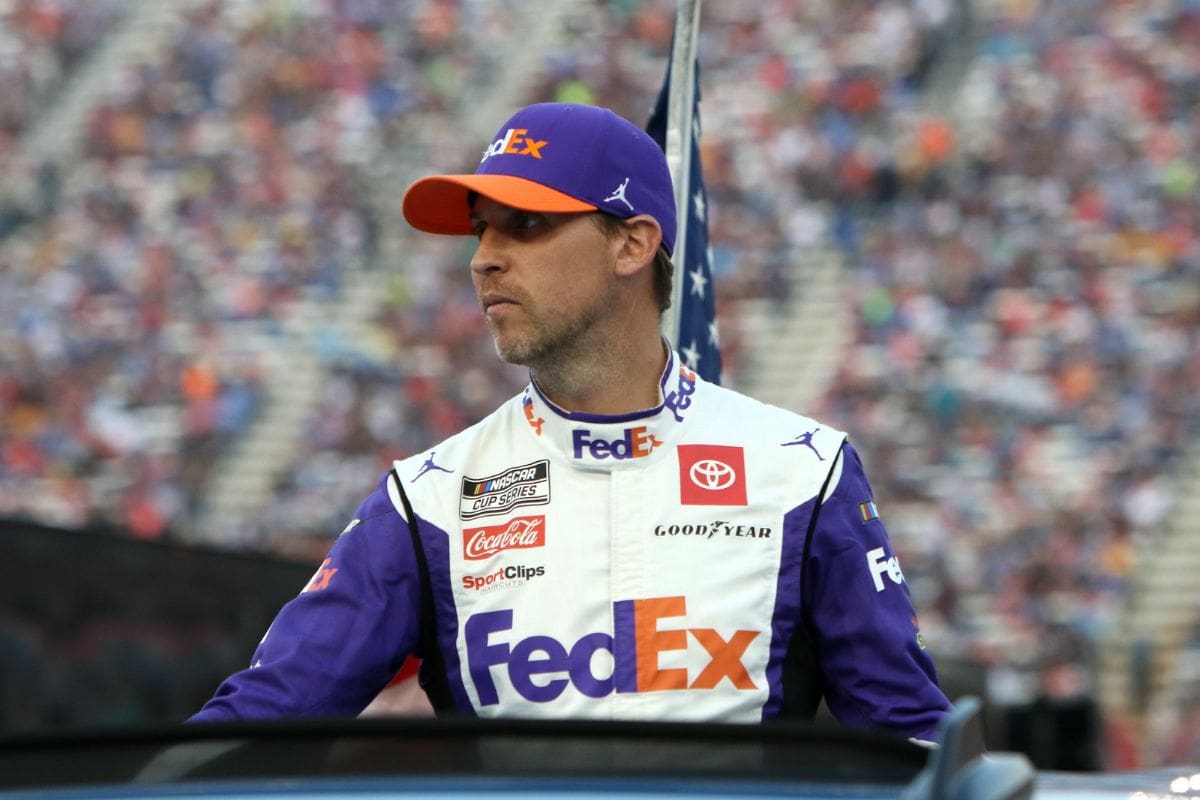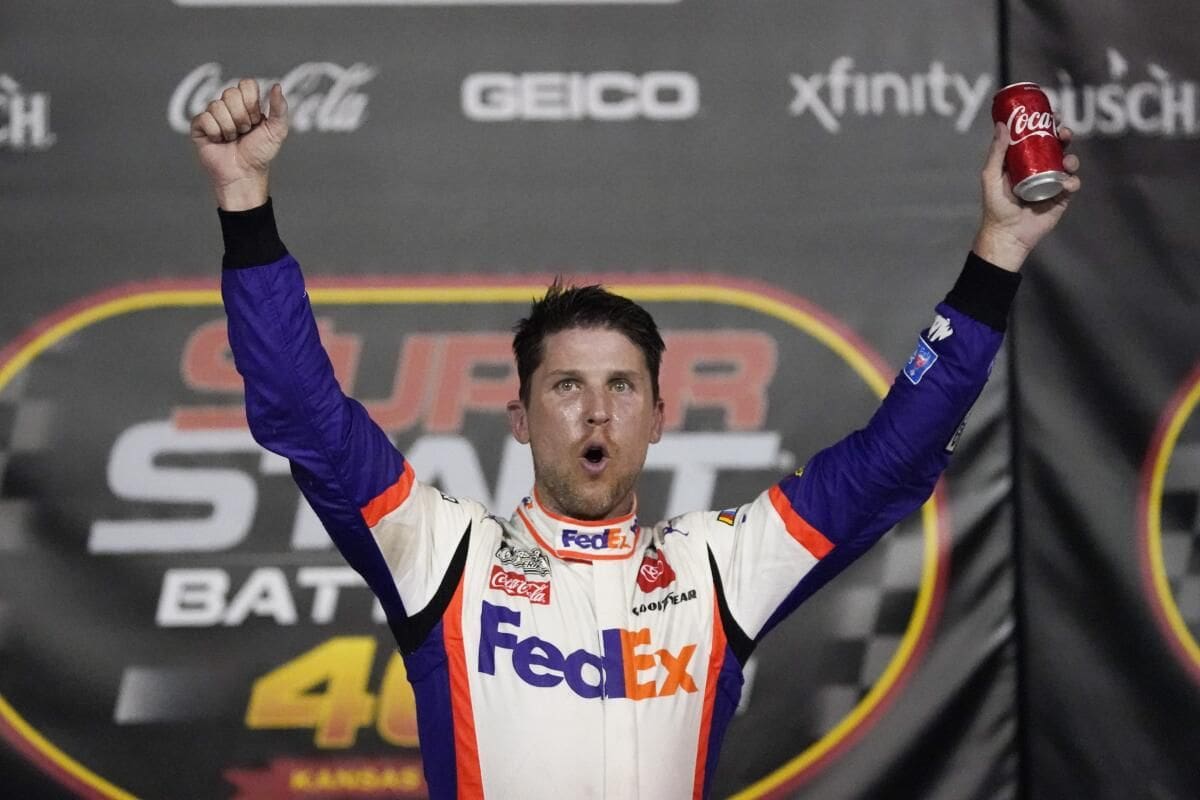Denny Hamlin Blames NASCAR’s Track Selection: Denny Hamlin‘s recent critiques of NASCAR’s track selection have sparked an important conversation regarding the broader implications for competitive equity in the sport. After a series of disappointing performances, especially at Watkins Glen, Hamlin contends that the characteristics of certain venues are undermining his playoff aspirations. This assertion raises critical questions about the role of track design in shaping race outcomes and whether drivers’ insights are adequately considered in the scheduling process. As the playoffs progress, the consequences of these claims could extend far beyond Hamlin’s individual struggles—what might this mean for the future of NASCAR?
Key Highlights
- Denny Hamlin’s playoff struggles have prompted him to criticize the suitability of NASCAR tracks for competitive racing.
- He believes track characteristics significantly impact driver performance and race dynamics.
- Hamlin’s recent wrecks at Watkins Glen highlighted the challenges posed by certain tracks during playoffs.
- The increased number of road courses and superspeedways in the playoffs has affected his competitive edge.
- Hamlin emphasizes the need for driver feedback in track selection to improve championship outcomes.
Denny Hamlin’s Playoff Struggles
Denny Hamlin’s playoff struggles have become a recurring theme in his racing career, particularly evident during the current postseason. The No. 11 driver has encountered notable setbacks, most significantly at Watkins Glen International, where he was involved in two separate wrecks. These incidents have hampered his performance and have cast a shadow over his championship aspirations.
As a seasoned competitor, Hamlin’s experience should ideally serve as an asset; however, the mounting strain of the playoffs appears to have compounded his difficulties.
Currently, Hamlin finds himself in a precarious position, sitting six points below the vital cutline ahead of the race at Bristol Motor Speedway. This deficit is alarming for a driver of his caliber, especially considering that the playoffs are notoriously unforgiving. With only a few races left before the Round of 12, the urgency to reclaim a competitive edge is palpable.
Adapting his strategies, maintaining composure, and executing flawlessly will be essential if he intends to reverse his fortunes. As the playoffs progress, Hamlin’s ability to recalibrate and respond to adversity will be tested like never before, and the stakes have never been higher.
Hamlin Shifts Blame to NASCAR Tracks
Following a series of disappointing finishes in the playoffs, Hamlin has redirected the conversation towards NASCAR’s selection of tracks, suggesting that the venues may be contributing factors to his struggles. In a recent interview, he articulated concerns regarding the suitability of certain tracks for competitive racing, particularly in the high-stakes environment of the playoffs. This shift in focus appears tactical, aiming to relieve stress as he approaches a crucial must-win race at Bristol Motor Speedway.
Hamlin’s critique centers on the inherent characteristics of the tracks chosen for the postseason, which can greatly affect race dynamics. The unique layouts, surface conditions, and weather factors at these venues can create challenges that may not align with his driving style or the strengths of his vehicle.
By emphasizing these external factors, Hamlin invokes a broader dialogue about the impact of track selection on championship outcomes. This perspective raises key questions about the role of NASCAR in curating a fair and competitive playoff environment.
The Wrecks at Watkins Glen
Despite the high hopes surrounding Denny Hamlin’s playoff aspirations, the challenges he faced at Watkins Glen emphasized the unpredictable nature of racing. The initial lap of the Go Bowling at The Glen set a grim tone for Hamlin’s race, as he collided with Ryan Blaney, resulting in considerable damage to both cars. Blaney’s early retirement highlighted the immediate impact of the incident, which left Hamlin grappling with the implications for his championship hopes.
“It sucks because I knew the damage was bad.” – Hamlin
As the race progressed, Hamlin’s situation deteriorated further when he found himself in a precarious three-wide scenario with Brad Keselowski on Lap 46. This encounter not only spun Hamlin out but also compounded the damage to his vehicle, effectively sealing his fate in a race that could have been crucial for his playoff journey.
“We were three-wide, and [Keselowski], I thought, could have let off there because we were so far ahead, he kept it three-wide and I wrecked.” – hamlin
These incidents at Watkins Glen not only reflect the volatility inherent in NASCAR but also serve as a reminder of how quickly fortunes can shift in the pursuit of a championship. For Hamlin, the path to his primary Cup Series title has become increasingly fraught with challenges.
Hamlin’s Response to the Slump
The aftermath of the challenging race at Watkins Glen has prompted Hamlin to reflect on his current performance slump in the NASCAR season. As a perennial contender, Hamlin’s struggles have raised questions about the evolving dynamics of the playoffs. When addressing this slump, he noted the distinctive nature of the current schedule, particularly the presence of an unprecedented number of road courses and superspeedways in the playoff lineup.
“We haven’t had tracks like this in the playoffs for the most part,” he stated, emphasizing how the unique configuration of the tracks this year contributes to higher levels of attrition.
“No, not really. But we haven’t had tracks like this in the playoffs for the most part. Usually, we got road courses and superspeedways and a lot of them but you don’t have this many in the playoffs as what we have this year. It’s just making for a lot of attrition and some good cars below the cutline that are likely to get eliminated.”- hamlin
Denny Hamlin shares his thoughts after Watkins Glen pic.twitter.com/tmZMjfHTaI
— Skewcar (@Skewcar) September 15, 2024
Hamlin’s insight suggests that the challenges presented by these tracks are not merely a matter of individual performance but are intricately linked to the broader competitive landscape. The increased frequency of road courses and superspeedways necessitates a different set of strategies, which may not align with Hamlin’s strengths or the team’s usual approach. This shift could explain why he feels the strain of competing against strong contenders who might excel in these environments.
Moreover, Hamlin’s acknowledgment that “some good cars below the cutline are likely to get eliminated” reflects a keen awareness of the broader implications of this season’s structure. His analytical approach highlights the delicate balance between driver skill and track suitability, suggesting that while individual performance is essential, external factors are similarly influential in determining playoff success.
Hamlin’s Frustration and Bristol Opportunity
Frustration has become a defining theme for Denny Hamlin as he navigates the tumultuous waters of the NASCAR Cup Series playoffs. His recent performances have been blemished by a series of unfortunate events, leaving him with a precarious position heading into the final Round of 16 race at Bristol Motor Speedway.
“I mean, yeah, it’s just a couple of races where things were out of your control. Just didn’t go well. The first lap, I mean. Certainly, I take responsibility for what I did on Saturday, which was not qualifying well. That’s on me. Certainly that put us right in the middle of where wrecks usually happen and we got shoved into it.” – hamlin
After two disappointing outings, with finishes no higher than 23rd place, Hamlin finds himself grappling with the weight of expectations and a looming sense of urgency.
In reflecting on his challenges, Hamlin pinpointed several factors contributing to his current predicament:
- Qualifying Performance: A poor qualifying position forced him into the chaos of the initial laps, where wrecks typically occur.
- Uncontrollable Circumstances: Multiple wrecks, including a notable incident at Watkins Glen, were beyond his control, exacerbating his frustration.
- Mental Resilience: The emotional toll of successive setbacks requires a mental reset, particularly as he approaches a critical race at Bristol.
Despite his setbacks, Bristol presents a unique opportunity for redemption. Known for its short track racing and high-intensity atmosphere, success at this venue could pivot Hamlin’s playoff path.
Drawing on his experience and skill, he must harness the energy of this iconic track to reclaim momentum and transform frustration into a launchpad for future success.
News in Brief: Denny Hamlin Blames NASCAR’s Track Selection
Denny Hamlin’s criticisms of NASCAR’s track selection emphasize a critical dialogue surrounding the impact of venue characteristics on competitive performance. The frustrations expressed following recent playoff setbacks highlight the potential influence of track dynamics on championship outcomes. As discussions about incorporating driver feedback into track selection gain momentum, the need for a more equitable racing environment becomes evident. Addressing these concerns may improve the integrity of the playoff system and foster a more competitive landscape within NASCAR.
ALSO READ: Denny Hamlin’s Watkins Glen Strategy: The Role of Goodyear’s New Tires in His Victory Plan



